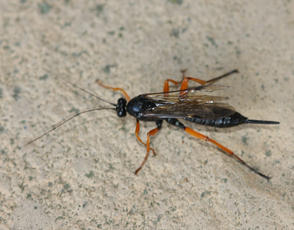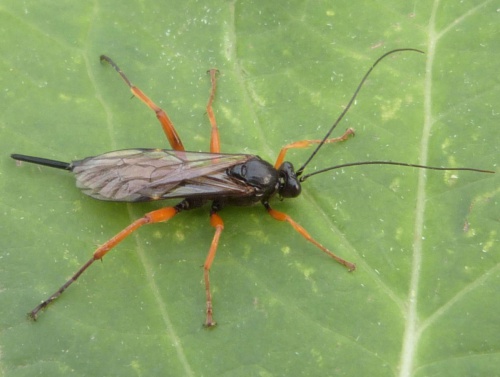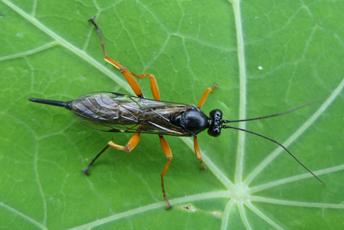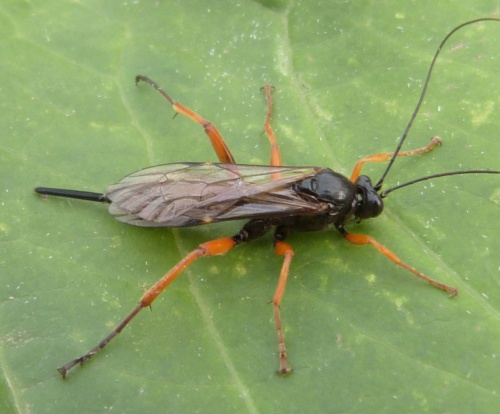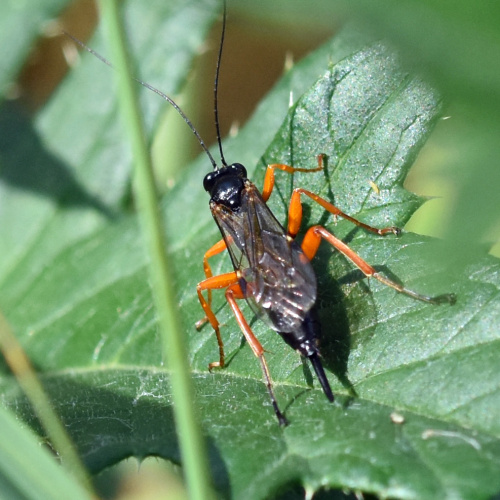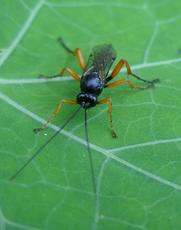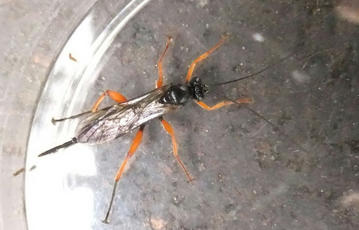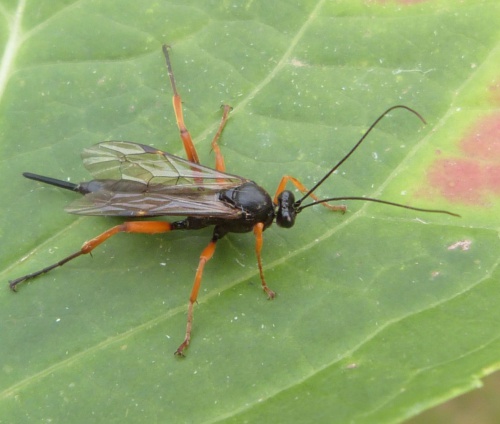Pimpla rufipes
Length about 15 mm. A mainly black species, but with bright orange legs, the hind pair of legs being only slightly larger than the other pairs. The ovipositor of the female is quite thick and short and the 'waist' between the thorax and abdomen is also quite short.
Pimpla rufipes can easily be mistaken for Apechthis compunctor being similar in shape and size (10 –15mm), although some Pimpla rufipes are very large. The key difference between the two is in the female ovipositor which in P. rufipes is straight and lacks the downward curved tip. For this reason, the males, which don’t have an ovipositor, are indistinguishable from photographs.
There are other Pimpla species which can also be confused with P. rufipes which has no black rings on the tibia.
Hedgerows and well vegetated areas.
Mainly an autumn species.
Predates butterfly and moth larvae, laying an egg in each one. Adults can sometimes be seen visiting flowers.
Quite common and widespread in England and Wales at least, but like many Ichneumonidae it is badly under recorded.
Fairly common in Leicestershire and Rutland.
Leicestershire & Rutland Map
Enter a town or village to see local records
MAP KEY:
Yellow squares = NBN records (all known data)
Coloured circles = NatureSpot records: 2025+ | 2020-2024 | pre-2020
UK Map
Species profile
- Species group:
- Bees, Wasps, Ants
- Kingdom:
- Animalia
- Order:
- Hymenoptera
- Family:
- Ichneumonidae
- Records on NatureSpot:
- 53
- First record:
- 25/09/2010 (Nicholls, David)
- Last record:
- 22/10/2025 (Pugh, Dylan)
Total records by month
% of records within its species group
10km squares with records
The latest images and records displayed below include those awaiting verification checks so we cannot guarantee that every identification is correct. Once accepted, the record displays a green tick.
In the Latest Records section, click on the header to sort A-Z, and again to sort Z-A. Use the header boxes to filter the list.




